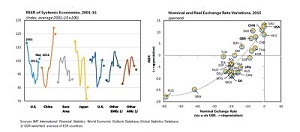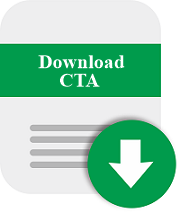The Inception
Consider the following conditions before accepting or declining an invitation to review:
- Corresponding to the area of expertise: Accept only if you believe the reviewer is capable of providing a high-quality review. If the reviewer is unable to complete the review, he or she should refer it to another reviewer who possesses the necessary capacity, capability, and expertise.
- A potential conflict of interest is discovered: the reviewer is expected to inform the editor.
- Availability of time: reviewing the process can be time consuming. As a result, before accepting an offer, ensure that the review process will meet the deadline.
The reviewers are expected to respond as soon as possible to the invitation (even if it is to decline). A delay in their decision can sluggish the review process and add to the author's wait time. If they decline the invitation, it would be beneficial if they could make alternative reviewer recommendations.
Supervising the Review
Confidential information
The invitation to review that is accepted must treat the materials received as confidential. This means that reviewers cannot share them with anyone without the editor's permission. Because peer review is confidential, they must also refrain from disclosing information about the review to anyone without the editors' and authors' permission. The review process is double-blind, which means that the author's name and affiliation will be withheld to protect author confidentiality and avoid potential conflicts of interest.
How to access your review and log in
- The review process will be managed through IJIEF's online journal system. To access the paper and submit your review, click on the link in the invitation email you received to access the submission/reviewing system.
- You must log in as a reviewer using the username and password provided by IJIEF management; if you do not have them, please contact the editorial assistant.
- Select articles sent by clicking "1 active". Number 1 indicates the number of articles handled. Then, please choose the article's title.
- Please take the time to read the article. Consider spot-checking significant issues by selecting which section to read first. We've included some pointers below on how to handle specific sections of the paper.
- The title should be succinct (no more than 12 words), but it should accurately represent the content of the paper.
- Abstracts include a background section, an objective section, a method section, a primary result section, and an implication section. (Maximum of 200 words). Including JEL Classification, Keywords, and the type of paper being written, which is a research paper. Paper/Review of Literature/Systematic Review/Overall View.
- Introduction: Clarity of the problem and its context, as well as the significance and relevance of the themes.
- Literature Review: Theoretical Ground and Relationship to Literature
- Methodology: The reason of Method used and the source, clarity and update of Data
- Results and Analysis: The presentation of Results and the cohesiveness of Analysis
- Conclusion and Recommendation: The alignment of problem statement to the Conclusion, and the relevant Recommendation
- References: The article referred in the body of the paper should match those in the references
- Contribution for Academic, Regulator, and Practitioner.
- Adhere to the review instructions, which consist of five steps:
- Reply to the Editor's Response to the article submission, select Will do the Review if you are willing to review, then send the email
- Download the article
- Give a review of the article on the review form which has been attached along with the manuscript, or you can download here.
- Upload Documents that have been commented on
- The reviewer may submit the following recommendations via the website system of the International Journal of Islamic Economics and Finance (IJIEF):
- Accept submission: If the manuscript under review is acceptable as-is, the reviewer selects this option.
- Revisions required: a reviewer selects this option if the manuscript is accepted with necessary corrections made by the author.
- Resubmit for review: If the manuscript requires significant revisions, the reviewer may choose this option. Thus, a second review is necessary after the author has made the necessary changes.
- Resubmit elsewhere: If the manuscript under review does not fit the journal's scope, vision, or mission, the reviewer may choose this option.
- Rejected: If a manuscript is rejected, a reviewer may choose to decline the submission.
- See comments: If a reviewer is unable to decide on a manuscript under review, he or she may submit it to an editor or editorial board in another country to view and read the reviewer's comments and seek advice.
- When you have completed the review process, please send an email.
Review Structure
Your review will assist the editor in determining whether to publish the article or not. Additionally, it will benefit the author and enable them to improve their manuscript. It is critical to express your overall opinion and observations about the article. Your comments should be polite and constructive, and should not contain any ad hominem attacks or personal information about you, such as your name.
It is critical to provide insight into any shortcomings. You should justify and support your judgment so that both editors and authors understand your comments completely. You should indicate whether your comments are based on your personal opinion or on data and evidence.
Following your Review
After submitting your review, you may wish to contact the Editorial Assistant to ensure that you are properly credited for your efforts. As a token of appreciation for your willingness to review, management provides a token of appreciation. As a token of appreciation, create a certificate for the reviewer and send it to the reviewer's email.
Remember that even after you've completed your review, you must treat the article and any associated files or data as if they were confidential documents. This means that you may not share them or information about the review with anyone without the editor's express permission.
Finally, we would like to express our heartfelt appreciation on behalf of the journal, editors, and author(s) for the time you took to provide valuable input to the article.
Editor Guidelines
The editor is the person in charge of overseeing the manuscript submission process until it is accepted for publication by their scientific discipline. To acquire a high-quality article, editors also make comments, recommendations, and judgments to change, approve, or reject the article. This policy is based on the COPE code of conduct as well as best practice guidelines.
Selecting Reviewers
- Editors should make certain that the right reviewers are chosen for submissions (i.e. individuals who can judge the work and are free from disqualifying competing interests).
- Editors should choose at least two reviewers to provide a report (the default on Manuscript Central is three) and make sure that not all of the reviewers are selected by the paper's authors unless there is a compelling reason.
- Editors should stop using reviewers who are habitually rude, low-quality, or late with their evaluations.
- Editors should look for possible new reviewers from a variety of sources (not just personal contacts) (e.g. author suggestions, bibliographic databases).
Review Process
- Editors should respond to any articles allocated to them as quickly as possible, aiming for an initial decision within a month.
- Editors should make every effort to handle all papers given to them, regardless of topic area, and only in extreme cases may a manuscript be returned to a Section Editor for reassignment. Section Editors strive to allocate articles correctly while also balancing the workloads of individual editors throughout the Editorial Board; yet, it is sometimes inevitable to assign a paper whose focus is outside of the allocated editor's.
- Editors should provide written feedback to authors on any decisions they make, even if the conclusion is evident in light of the reviewers' remarks, in which case one or two sentences summarizing the reviewers' comments is sufficient.
- Editors should be prepared to justify any significant variation from the peer review procedure as specified (see Peer Review Process)
- Editors should require reviewers to identify any potential competing interests before agreeing to examine a proposal,
- Editors should keep an eye on peer reviewer performance and take actions to guarantee that it is up to par.
- Editors should urge reviewers to provide feedback on their work.
- Submissions bring ethical issues as well as the possibility of research and publication dishonesty (e.g. unethical research design, inappropriate data manipulation, and presentation).
- There is no conflict of interest between authors, editors, and reviewers when it comes to the originality of submissions
- Being aware of duplicate publication and plagiarism.
Responsibilities of the Editor-in-Chief
The Editor-in-Chief is the journal's leader and is primarily accountable for the journal's scholarly excellence. The position of Editor-in-Chief is one of distinction. The Editor-in-Chief is in charge of supporting the Editorial Office with journal management, which includes:
- Scientific choices about the scope of the journal
- Inviting eminent scientists to join the editorial board,
- Recommending special issue ideas,
- Assisting Guest Editors with special issue preparation, and
- Overseeing the editorial process for individual submissions (mainly by taking the final decision whether a paper can be published after peer-review and revisions).
Responsibilities of Editorial Board Members
Members of the Editorial Board have the following responsibilities:
- Each year, he or she is asked to assess one or two manuscripts and may be asked to assist in the editing of a special issue on a topic related to his or her research interests.
- From time to time, I'm approached for comments or feedback on new regulations affecting the journal.
- Contribute to the journal's promotion among their colleagues or at conferences. E-mail is the primary mode of communication with Editorial Board members.
- If a member of the Editorial Board feels overburdened by demands from the journal's Editorial Office, he or she may resign at any moment.
Responsibility for the Special Issue as a Guest Editor
Special issues are usually edited by a Guest Editor who invites colleagues from the same study field to write an article on a topic that is relevant to them. The Guest Editor collaborates with the Editorial Office to create a description and keywords for the web page for the special issue. We hope to publish at least ten pieces per special issue. Frequently, the Guest Editor will also contribute an editorial to the special edition. The Guest Editor normally decides whether papers submitted to his or her special issue will be accepted (depending on the journal's policy; in some situations, they may make a suggestion to the Editor-in-Chief). The papers in a special issue are published online in the journal as soon as they are accepted, and they are aggregated on the special issue homepage. This implies that authors who submit material will see their work as soon as it is accepted, even if other papers in the special issue are still being processed.
Guest Editors should avoid having conflicts of interest with authors whose work they are evaluating, such as if they are from the same university or work closely together. Final acceptance decisions for submitted papers will be made by the Editor-in-Chief or an appropriate editorial board member in this situation.





